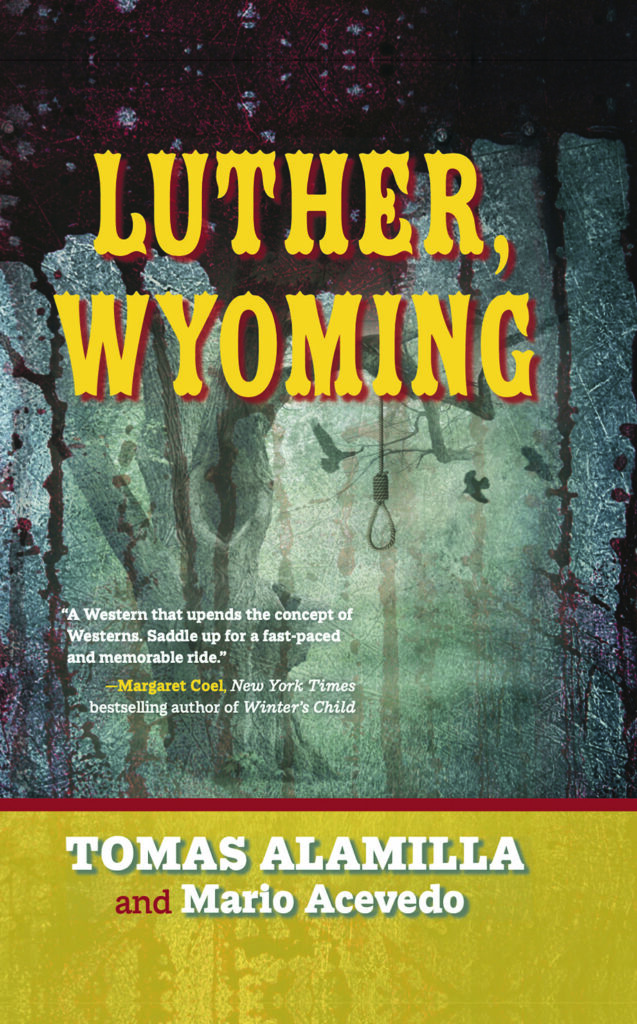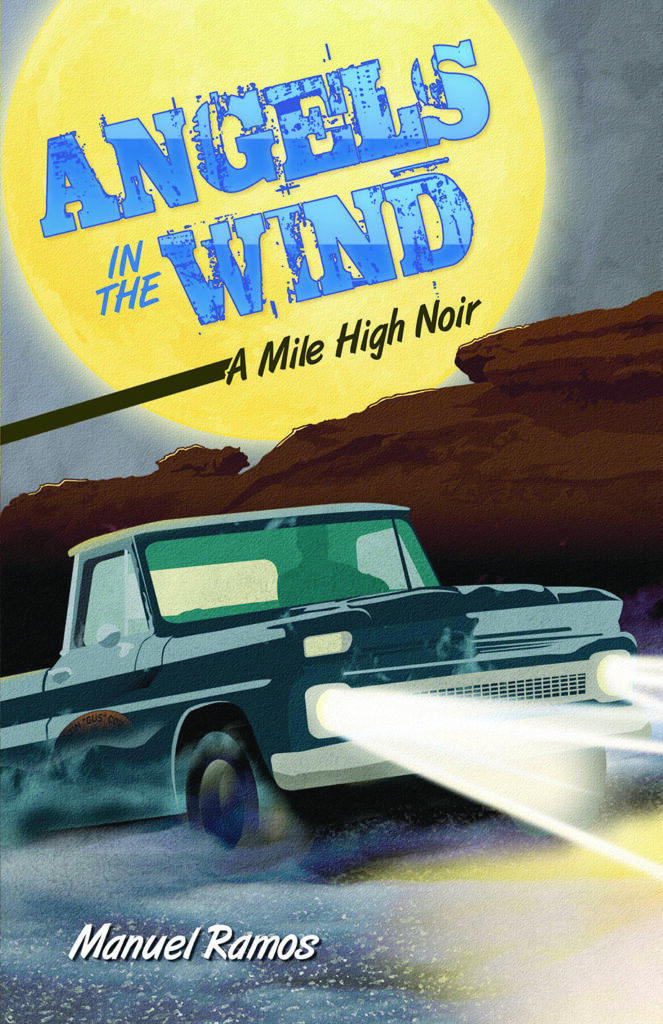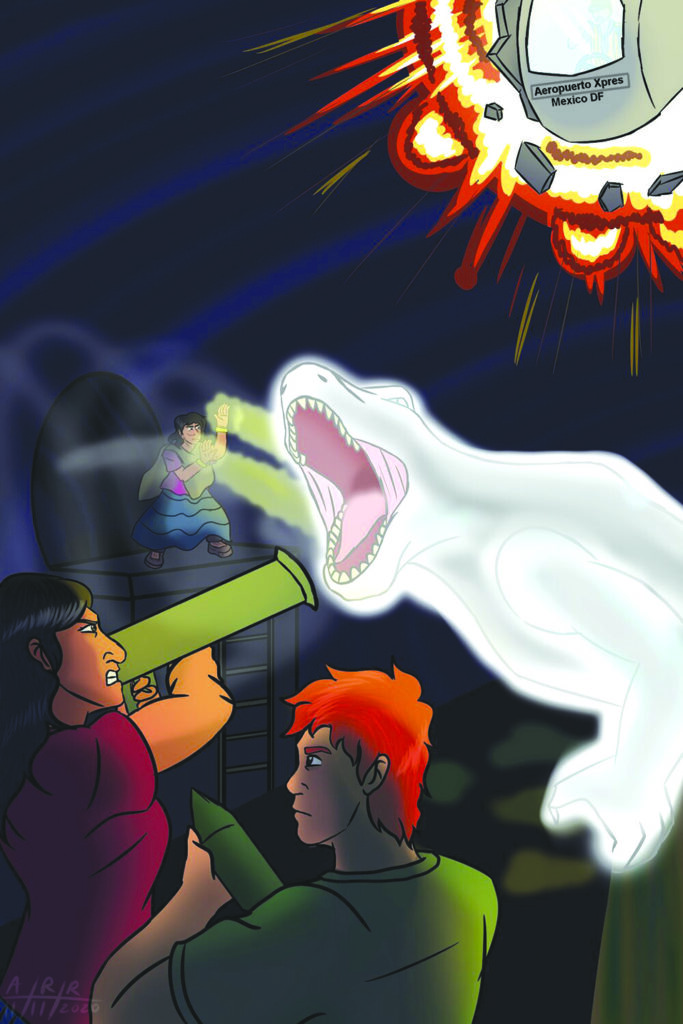The Denver North Star recently visited with a handful of writers who call North Denver home. We set out to explore how the neighborhood influences them and their writing. If it’s true that artists reflect our world back to us, then we’ve struck the jackpot with an abundance of perspectives, characters, and themes to take in. From newer arrivals to writers who have lived here for decades, we can see ourselves and our community through their thoughtful eyes.
Manuel Aragon
Manuel Aragon was raised on the Northside and has lived less than two miles from his childhood home for the last 16 years. He’s witnessed dramatic change and admits to a complicated internal dialogue between the neighborhood he calls home today and the place he misses from his earliest years. For Aragon, writing is an act of preservation. It’s his way of rooting the Latinx community here where it has played—and continues to play—a vibrant role in the arts, in politics, and beyond.
Aragon embeds neighborhood history, stories, and myths into the settings and storylines of his upcoming short story collection, Norteñas. During the pandemic—alongside family life and working at Lighthouse Writers Workshop—Aragon also launched into the first draft of a novel. One of his short stories, about a near future dystopia, kept growing. Aragon is working with an agent to secure a publisher for both projects.
Aragon notices when people emphasize the neighborhood’s Irish and Italian past, skipping over significant history connected to Mexican and Mexican American communities. And he notices when the term “Northside” is dropped in favor of other names, specific neighborhood names like Jefferson Park, Sunnyside, or Sloan’s. Does this trend erase history?

Mario Acevedo
Mario Acevedo moved to the Northside in 2012. Curious by nature, he seeks out the history of a place wherever he lives or visits. For Acevedo, a good writer is both sensitive to the people and places they are writing about and also a bit thick-skinned. Despite decades putting out his own books and ghostwriting for others, Acevedo maintains there is always room to improve. Acevedo’s latest book, Luther, Wyoming, follows his Felix Gomez detective-vampire series and young adult humor thriller, University of Doom.
Acevedo is proud to be part of North Denver’s community of writers. He appreciates neighborhood history (do you know about the Polish church in Globeville?), strong connections to the Chicano movement of the 1970’s, and groups like Rocky Mountain Fiction Writers. Akin to other artists, Acevedo is drawn to the details. He points to architecture and the quirky ways people make their place here, adapting homes built over a hundred years ago to today’s needs. At dusk, on a walk near his home, Acevedo notices the striking chandelier that hangs inside an older home.

Manuel Ramos
Manuel Ramos’ 40 years on the Northside—added to a first career as an attorney—provides ample material for his Chicano noir crime fiction books. The North Denver of Ramos’ early years was populated by immigrants from Eastern Europe and Mexico alongside Italian and Irish communities. He “put his characters in the middle of it to see what would happen.” And? Eleven novels and a volume of short stories later, a mountain of keen observations have happened. Six of Ramos’ books spin tales of Chicano lawyer and former activist Luis Montez. Ramos’ eleventh novel, Angels in the Wind, available in April, takes Ramos’ newer protagonist, private investigator and ex-felon Gus Corral, from North Denver to Pueblo and out onto Colorado’s eastern plains.
Ramos takes the long view and encourages others to do the same. He hopes newer residents will learn about neighborhood history, respect its roots, “You’re welcome here, you bring something. Find out about the history.”
Tameca Coleman
A North Denverite for 8 years, Tameca Coleman’s experience as a writer intersects with neighborhood on sensory levels. Before moving closer to Sloan’s Lake from a place near Federal Boulevard, the constant drone of construction sounds led to efforts at finding music with the right combination of sounds to drown it out—and relieve the accompanying anxious feelings.
Coleman feels lucky to have good landlords and rent they can make work. Yet they crave being around more young people and people of color. Coleman notices the neighborhood becoming less and less diverse and can point to times of feeling downright invisible. There are parts of the neighborhood where people seem to walk right through them.
Coleman has adapted their writing practices to the rhythms of the past year and turned the corner into 2021 receiving exciting news: their debut book, an identity polyptych, will be available from The Elephants on the Salish Sea in September 2021. It’s a “multi-part, multigenre experimental work that explores familial estrangement, identity as a mixed-race Black person, and movement towards reconciliation.”

Rudy Garcia
Rudy Garcia has adopted fellow writer Paolo Bacigalupi’s credo “Give up on the adults!” After several adult stories and one novel, now under the byline R. Ch. Garcia, he turned his attention to young adults and children. Death Song of the Dragón Chicxulub, a coming-of-age fantasy story, comes out in May. The story follows Miguel Reilly, “a middle-class American with tenuous ties to his Irish-American roots who finds kinship in the worlds of the Chicano, Mexican, and Native American peoples.”
How does 50 years of North Denver life express itself in Garcia’s writing? Early on, he developed his craft under the late Ed Bryant, the legendary SciFi and Horror writer who lived in North Denver. Garcia’s work also draws on his experiences as a former teacher at Remington and Valdez elementary schools, and his pastimes of woodworking, gardening, and befriending wild birds who frequent his yard. Garcia’s short story “Mr. Sumac” riffs imaginatively on the neighbor we all know—the one who takes things just a step too far.
Back in real life, Garcia knows each of his neighbors—including the dogs—by first name. His advice for our readers? Invite people over. Set up a front patio. Enjoy a beer and talk.
It’s advice that takes us back to where we left off with Manuel Aragon. To Aragon, love of neighborhood is transferred through story. If we get to know our neighbors—especially the ones who’ve lived here a while—we’ll hear some amazing stories and perhaps fall even further in love with the rich and complicated place we call ___________.
North Denver is home to dozens of writers. Ask a local bookseller or librarian to guide you to their books.
Mario Acevedo
http://www.marioacevedo.com/
Manuel Aragon
https://www.manuelaragon.com/
Tameca Coleman
https://linktr.ee/sireneatspoetry
Rudy Ch Garcia
https://www.rchgarcia.com/
Manual Ramos
http://www.manuelramos.com/

As a past Professor at Metropolitan State University of Denver, past columnist for the Rocky Mountain News and current columnist for El Semanario: The Weekly Issue, published poet, and researcher, it is great to see accomplished and upcoming writers, novelists, poets and researchers pick up the pen and tell stories, cuentos, and poetry in order to leave a legacy. What Chicana and Chicano writers have learned is that if we don’t write our history, someone else will, often leaving our perspectives and contributions out of the narrative. Write On!!!.